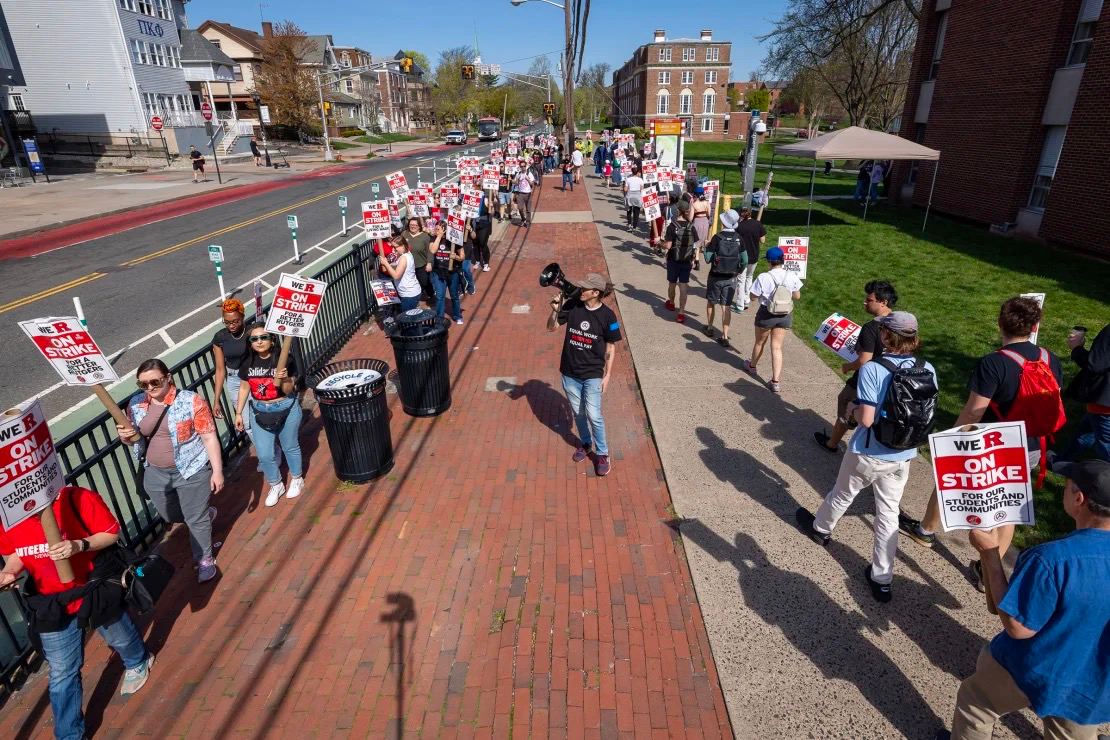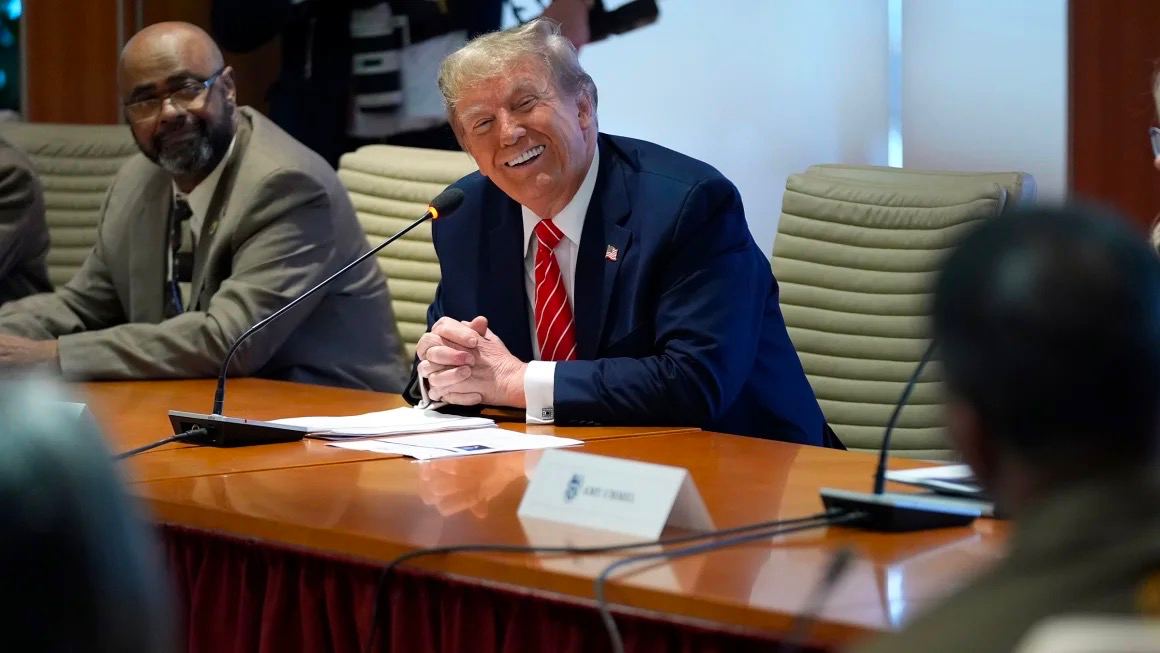Joe Biden and Donald Trump are tussling over the union vote.
Biden, who is meeting with the United Auto Workers in Michigan on Thursday, finds himself trying to fend off Trump’s overtures to a traditionally Democratic constituency. Trump is meeting up with the Teamsters in Washington on Wednesday.
Trump’s efforts seem to be paying off, polling data shows, as Biden fights against the long-term trends of union members shifting away from Democrats.
Take a look at recent New York Times/Siena College polling in the six closest swing states that Biden won in 2020: Arizona, Georgia, Michigan, Nevada, Pennsylvania and Wisconsin. Biden and Trump were tied at 47% among union members when asked who they’d vote for in 2024. When these swing state voters were asked how they voted in 2020, Biden won the group by an 8-point margin.
The union vote is especially important in Michigan, Nevada and Pennsylvania. Somewhere between 14% and 15% of employees in these three states are represented by unions. (Between 12% and 13% of employees in these states are themselves union members.)
The latest polling may be a surprise given that union workers are generally thought of as a strong Democratic group. It shouldn’t be.
Biden won union workers – who reside primarily in blue states – by 22 points, according to the 2020 Cooperative Election Study survey by Harvard University. Compare that with Bill Clinton’s performance in 1992, when he won the national popular vote by a similar margin to Biden 28 years later. But Clinton won union members by 31 points, according to an American National Election Studies survey.

We’re a far cry from 1948, when Democrat Harry Truman won union workers by 62 points over Republican Thomas Dewey. Truman almost certainly wouldn’t have won the election that year without them.
Truman, for those who don’t know, ran a very populist campaign against Dewey, the New York governor whom he portrayed as an elitist from the Republican “Eastern Establishment.”
Today, a lot of Republicans, including Trump, try to appear as populists. Some of the movement among organized labor away from Democrats can, in fact, be attributed to larger forces affecting politics. Mainly the fact that non-college graduates of all stripes have become friendlier to the GOP.
Indeed, Trump won non-college graduate union members by 6 points in 2020. Biden’s victory among union members was entirely attributable to those who had graduated college, winning them by 46 points.
You might think this is a divide between the union bosses and the rank-in-file, though I’m not sure that’s entirely right. While people are most likely to think of a union worker as someone on an assembly line, the fact is that union workers are far likelier to be in education, training and library occupations (32.7%). Additionally, public sector employees are much likelier to be part of a union (32.5%) than private sector employees (6.0%).

As the face of union workers has changed, so too has their place within the electorate. When Truman defeated Dewey, union workers represented about 30% of wage and salary workers. Today, they’re about 10%.
The declining share of union members among the general workforce may lead you to believe they have declining influence. Perhaps that is the case, but remember also that elections today are closer than they have been at any point in our lifetimes.
There hasn’t been a presidential election decided by double digits in the popular vote in the past 36 years. That’s the longest streak in American politics. Any small movement within any somewhat sizable voting bloc matters.
Moreover, union members often lead get-out-the-vote efforts in pivotal battleground states. Motivating them can have an impact beyond just the votes of union members.
This can also be seen in the fact that Americans hold largely favorable views of unions. About two-thirds of Americans approve of labor unions, which ranks among the highest percentages recorded since 1967. Just 15 years ago, only 48% of Americans approved of unions.
In other words, it pays to be seen as friendly to labor unions even among those voters who are not members.
Given these facts, as Biden and Trump appear to be heading toward a fall rematch, don’t expect them to stop courting union voters all the way through Election Day.




